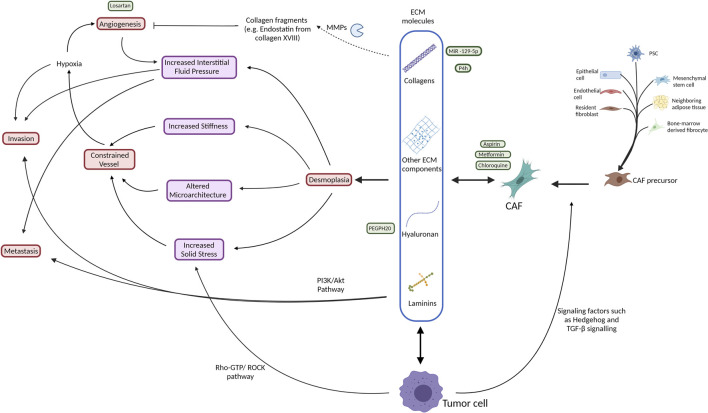FIGURE 2.
Schematic illustration of the interactive network of the tumor stroma with respect to ECM production (blue box) and its effects on biomechanical (purple) traits and induction of physiological processes (red) within the tissue. Additionally, indicated are various approaches to therapeutic intervention (green). Broadly, both tumor cells and CAFs, which have several cell types of origin, produce ECM proteins that contribute to desmoplasia, consequently increasing tissue stiffness, pressure and architecture in a manner that constrains vessels, leading to a hypoxic environment. This hypoxic environment promotes angiogenesis and cell invasion. The increased angiogenesis results in an increased interstitial fluid pressure that acts to promote invasion and metastasis of the tumor cells. The tumor cells themselves also contribute directly by means of their proliferation to increase the solid stress of the tissue that also supports a feedback loop by constraining vessel access to the tissue. Attempted therapeutic interventions include reduction of CAF formation, degradation of ECM collagens and hyaluronan, MMP inhibition and anti-angiongenic treatments. Akt, protein kinase B; CAF, cancer associated fibroblast; COL, collagen; ECM, extracellular matrix; GTP, guanosine triphosphate; HA, hyaluronan; LAMB3, laminin subunit beta-3; MMP, matrix metalloproteinase; PDAC, pancreatic ductal adenocarcinoma; PEGPH20, PEGylated human recombinant PH20 hyaluronidase; PI3K, phosphatidylinositol 3-kinase; PSC, pancreatic stellate cell; ROCK, Rho associated protein kinase; TGF-β, transforming growth factor β; TME, tumor microenvironment.

